Android Central's top-ranking Chromebook reviews ranked
The best Chromebooks of 2020 can provide a top-notch computing experience, perfect for students, grandparents and anyone looking for a trouble-free laptop with long battery life. We've reviewed and rated the absolute best Chromebooks so that you can find the best value at any budget. Our buyer's guide will help you find the perfect Chrome OS laptop or tablet.
Best overall
Lenovo Chromebook C330
Last year's Lenovo is still the best Chromebook to buy.
This zippy little Chromebook can last 10 hours and won't weigh down your backpack during an all-day excursion.
Lenovo Chromebook C330 Features
- Bright 11.6-inch touchscreen
- True 10-hour battery life
- Excellent performance for the price
- 4GB RAM, 32-64GB storage
- Balanced weight and size
- Bright, shimmery 2-in-1 design
The best Chromebook balances size with productivity, style with substance, and panache with a price. It's a Chromebook that anyone can pick up and fall in love with, and today, that's still the Lenovo Chromebook C330. Its bright, subtly-shimmery chassis is durable without looking like some boring black tank and hits the sweet spot between too big to carry around one-handed and too small to get work done on.
This is the Chromebook I've used myself most of the last year, and its battery life and durability are the real deal. Even on max brightness, I've gotten over 6 hours of use on a single charge, and on the lower brightnesses I prefer, I've also pushed it to 12 hours of use before it begged for a charger. The C330 has been promised an extended support life, so it should get updates for years to come.
If you can find/afford the 64GB model, I absolutely recommend springing for it, but the 32GB model is a bargain when the sales get going. There's also only one USB-C port on this Chromebook, but most of us only have one use for the USB-C port right now anyway: charging.
Auto Update Expiration date: June 2025
Great if you can find it
Lenovo Chromebook C340 (11.6")
The best Chromebook just got better.
With double the USB ports and 8GB models on the horizon, Lenovo's aluminum-lidded laptop is more than a pretty face.
Lenovo Chromebook C340 (11.6") Features
- 11.6-inch 10-point IPS touchscreen
- Aluminum lid, plastic body
- Intel Celeron N4000
- 4-8GB RAM, 32-64GB storage
- Up to 10-hour battery life
- Pretty pink or silver color options
While last year's C330 skimped on ports, the Lenovo Chromebook C340 (also known as the C340-11) features a USB-A and USB-C port on each side of the machine, larger volume and power buttons, and swaps the full-size SD slot for a more compact and widely-used microSD. This new model is also slated for almost seven years of Chrome OS updates.
This Chromebook has proven very, very popular over the short months it's been available: Amazon can rarely keep 64GB models in stock — especially the alluring Sand Pink version — and most other retailers sell out just as quickly with the 32GB models. If you can find a C340-11, especially a 64GB model, don't wait too long: blink and they'll be gone.
The C340-11 has been out for almost six months now, and it's worked like a champ so far, lasting over nine hours on a single charge and holding up with over a dozen tabs open. The bezels around the screen are large, but they come in handy when you flip it over into tablet mode, and the keyboard is easy to type on for hours at a time.
Auto Update Expiration date: Jun 2026
Upgrade pick
ASUS Chromebook Flip C434
A portable powerhouse you can use anywhere
The 14-inch touchscreen excels at multitasking, and the backlit keyboard is easy to type on late into the night.
ASUS Chromebook Flip C434 Features
- 14-inch 1080p touchscreen
- Backlit keyboard
- Large trackpad
- Super-thin bezels
- Up to 10-hour battery life
- Thin aluminum build
The Chromebook Flip C434 is essentially a 14-inch Chromebook in a 13-inch shell, offering you a bigger screen while still being portable. Between its thin, solid construction, excellent battery life, and options for higher RAM and storage, the C434 is a Chromebook that can do it all. One of the few Chromebooks to offer a backlit keyboard, it's perfect for long nights and dim offices.
Even though 4GB has been more than enough for my 20-tab sessions, the option for 8GB of RAM is welcome. I wish 128GB models were more widely available, but 64GB is more than enough to get by. Throw in a sleek aluminum body, and you get a 14-inch laptop that's only slightly longer than my 11.6-inch C330 daily driver and shines brightly thanks to its "Spangle Silver" finish.
Auto Update Expiration date: June 2026
Google's latest
Google Pixelbook Go
Google's stylish new high-end Chromebook
While not a 2-in-1, the Pixelbook Go a powerful, premium clamshell Chromebook with a magnificent magnesium shell and Google's great design prowess.
Google Pixelbook Go Features
- Bright 13.3-inch touchscreen
- Premium magnesium body
- Up to 12 hour battery life
- 8-16GB RAM, 64-256GB storage
- Up to Intel i7 processor
- First for new features
While the 3:2 form factor of the original Pixelbook certainly had its fans, I'm pleased as punch that the Go uses a far more sensible 16:9 aspect ratio, which is better for split-screening and better for in-flight movies. The Pixelbook Go can't fold back into tablet mode like the Pixelbook — and most other Chromebooks on the market — but that also means it didn't need huge grippable bezels around the screen, allowing it to squeeze down into a slimmer footprint.
Another marked improvement for the Go is a more functional design that's still luxurious. While the Pixelbook was all sharp corners and flat rectangles, the Go has rounded edges and a wavy ridged bottom that increases grip and stability. The Pixelbook Go also has two colors — pink and black — quiet Husk Keys, and a lightweight magnesium body similar to that used by the Microsoft Surface line.
If you live for having the latest features, the Pixelbook Go is for you because, as Google's branded Chromebook, this shiny baby gets all the new toys before anyone else does, especially once you hope onto the Beta or Dev channels. You'll also want to invest in some USB-C hubs, as the Pixelbook Go only has three ports: a USB-C port on either side of the laptop and a headphone jack.
Auto Update Expiration date: June 2026
Best for students
Dell Chromebook 3100 2-in-1
Plenty of ports and configuration options.
Dell's price tags reflect its legacy of quality, but most laptops in this size bracket lack the configuration options the Dell 3100 offers.
Dell Chromebook 3100 2-in-1 Features
- 11.6-inch Gorilla Glass touchscreen
- Up to 13 hours of battery life
- Two USB-C and USB-A ports
- 4-8GB RAM, 32-64GB storage
- Mil-spec durability & rugged shell
- Spill-resistant keyboard
Dell debuted three new education Chromebooks last summer, but the 3100 2-in-1 is the cream of the crop. With options for 8GB RAM or 64GB storage — though oddly no option for both — this rugged little Chromebook is ready for anything life throws at you. While it's aimed as education, with up to 13 hours of battery life and a keyboard that can withstand 12 ounces of liquid being spilled on it, this is also an excellent option for the young businesswoman on the go.
The 3100 2-in-1 has two USB-A and USB-C ports — one on each side — as well as a microSD slot and headphone jack, and while the extra USB-A port isn't necessary, spares are always appreciated when they can fit in the same size chassis. There's no stylus option here, which is a bummer. Still, performance is decent, and the configuration options are nice to see, and while most other student-geared Chromebooks are getting hard to find, the Dell 3100 is readily available.
Auto Update Expiration date: June 2026
Best tablet
Google Pixel Slate
Winner as a tablet and a Chromebook
The Pixel Slate might have gotten off to a shaky start in 2018, but these days it's earning its price tag now that the software's been optimized.
Google Pixel Slate Features
- Vibrant 12.3-inch 3:2 touchscreen
- 8th Gen Intel m3, i5, or i7
- Battery lasts up to 12 hours
- 8-16GB RAM, 64-256GB storage
- Proper Chrome OS tablet
- Great for multitasking
When the Pixel Slate debuted in 2018, Chrome OS wasn't quite ready for tablets the way it is now in 2020, and other performance hiccups quickly drew the ire of reviewers and early buyers alike. It took the better part of a year for the Pixel Slate to get to where it should have been at launch, so these days, the Slate is a pretty great buy, especially since it goes on sale more often than the newer Pixelbook Go.
The 3000x2000 "Molecular Display" touchscreen on the Slate is an absolute beauty, and it supports the Pixelbook Pen if you like to sketch, doodle or annotate on your tablet. I'm still slightly annoyed Google took the Apple approach of not including a keyboard cover in the box, but these days bundled options are available from most retailers, including Amazon, so that you can have the proper experience from the get-go.
Auto Update Expiration date: June 2026
Best big-screen Chromebook
Lenovo Chromebook C340 (15.6")
Great functionality in a price-performing package.
This super-sized successor to our favorite C330 brings a solid offering to the large-screen segment of the Chromebook market.
Lenovo Chromebook C340 (15.6") Features
- 15.6-inch 1080p touchscreen
- Intel Gold or i3 processor
- Full keyboard with numpad
- 4GB RAM, 32-64GB storage
- Good port configuration
- Huge 2-in-1 for media
If you remember from the top of our list, the Lenovo C330 is a dependable, affordable workhorse that I love, and Lenovo brought the same affordable workhorse experience to a larger form factor with the 15.6-inch Lenovo C340, also known as the C340-15.
This may not have a 4K screen like the Lenovo C630, but it's significantly less expensive and has a more durable, pleasant-in-the-hand design. The C340-15 may only have up to 64GB of storage — please, please, do yourself a favor and get the i3/64GB model — but it also has a microSD card slot so you can load up on movies for that cross-country flight. Its 56kWh battery can last 10 hours, long enough to watch the three Lord of the Rings films (theatrical, not Extended Edition) before needing to find a USB-C charger.
Another beautiful addition to the C340-15 is the addition of a number pad to the keyboard, which is a wonderful addition for those of us who prefer to lock a Chromebook via PIN or need to input a lot of numbers and grade scores. It's a small improvement, but it has a huge impact.
Auto Update Expiration date: June 2025
Power and style
Acer Chromebook Spin 13
Phenomenal Chromebook power, reasonable price point.
With an i5 processor, ample storage and a big, bright, beautiful screen, this is a premium Chromebook for a mid-range price.
Acer Chromebook Spin 13 Features
- Vibrant 13.5-inch 2K touchscreen
- Beefy 8th-Gen i5 processor
- 10-hour battery life
- 8GB RAM, 128GB storage
- Very powerful 2-in-1
- Beautiful build quality
When the Acer Chromebook Spin 13 debuted, it was one of the most powerful Chromebooks on the market, and it's still got it going on today. Even better, while i5 models of the Pixelbook Go quite expensive, the Acer has come down a fair amount already and is starting to see more frequent sales. The 2-in-1 touchscreen combines with the included WACOM stylus to make this one of the best models around for chronic doodlers and precision-tapping Excel sheets.
Also, if you're the type to watch a lot of videos offline, the 128GB storage makes the Spin 13 a great option since it gives you lots of space for downloading Android apps and downloading music, movies, and game content to entertain yourself on that week-long cruise to Alaska.
Auto Update Expiration date: June 2025
Refined classroom Chromebook
ASUS Chromebook Flip C214
Rugged, reliable, and ready to pull an all-nighter.
This updated version of the C214 improves on the 2017 model in just about every way: slimmer, more powerful, and better optimized.
ASUS Chromebook Flip C214 Features
- Durable 11.6-inch touchscreen
- Mil-STD-810G rugged 2-in-1
- Up to 12 hour battery life
- 4 GB RAM, 32 GB storage
- Spill-resistant keyboard
- EMR stylus model available
The 11.6-inch ASUS Chromebook Flip C214 folds completely flat into tablet mode with a high-strength zinc alloy hinge that shouldn't wear out no matter how hard your kid — or you — are on it. With a channeled, spill-resistant keyboard, if in-flight turbulence sends your Coke or coffee over your Chromebook, you're not out extra cash for a new one.
This updated model will also move the secondary camera from the top of the keyboard to the lower right corner, putting it top right when the Chromebook is in tablet mode but also making it more prone to grease buildup since it will sit near the user's palm. If I could make a suggestion: grab the version with the stylus. It's great for sketching away in art apps — or scrolling through fanfiction in bed, which is what I use it for most often.
Auto Update Expiration date: June 2026
Workforce workhorse
Acer Chromebook 715
A good workhorse that won't stand out
Build quality is solid on the powerful but understated Acer Chromebook 715, which makes it great for office work but a bit big for travel.
Acer Chromebook 715 Features
- 15.6-inch 1080p IPS touchscreen
- Up to 12 hours of battery life
- Full keyboard with number pad
- 4GB RAM, 128GB storage
- Solid build quality
- 8th Gen Intel i3
While the Acer Chromebook 715 is "just okay" in a few areas — the screen is adequate but not stellar, speakers are tinny at times — it adds up to a reliable option if you want a big screen but not a big price. There aren't many 15-inch Chromebooks in this price range these days — even fewer with touchscreens — so that helps the overall unimposing 715 stand out in the crowded Chromebook lineup that Acer keeps cranking out.
As they say, "beauty lies within", and the power underneath the unassuming aluminum chassis is what should draw you to the Acer 715. The Intel i3 is a powerful processor perfect for professionals and power users. I wish it was paired with 8GB of RAM, but 4GB has been enough in my limited time with my review model so far. Like the Lenovo C340-15, the 715 comes with a numpad on its keyboard, another benefit for number-crunchers and teachers with dozens of grades to enter.
Auto Update Expiration date: November 2025
Recap — There's a Chromebook out there for everyone
Chromebooks might get pegged as only being for students and salarymen. Still, there truly is a Chromebook for everybody these days, whether you're just browsing email and social media or getting down and dirty with Linux apps and coding IDEs. With Stadia on the horizon, gaming on a Chromebook will be here soon, too. While there are a lot of great Chromebook manufacturers out there, Lenovo and ASUS's models seem to go harder and last longer than the competition, though Samsung, Dell, and HP can make some pretty premium Chromebooks when they put their minds to it.
How to pick the best Chromebook
Choosing your Chromebook is slightly different than picking a Windows or Mac laptop due to the standardized, cloud-centric nature of Chrome OS. Because Google controls the software look and update schedule for every Chromebook model, a Chromebook built by Lenovo should act the same as a Chromebook from Dell or Samsung. So what does that mean?
It means you can focus a little less on those core specs and focus more on what you want to do with the machine you choose. This process may seem slightly out of order, but trust me on this one:
1. Get one with a touchscreen — a 2-in-1 if you can
Touchscreens may be a luxury for other laptop systems, but on Chromebooks, I consider it a requirement. Chrome OS's touch optimization is getting better every month, and since most of the Android apps Chromebooks can install via Google Play are optimized for touch, treat yourself to a touchscreen model!
Touchscreen models usually aren't that much more expensive for Chromebooks in 2019 — many Chromebook models don't even bother with non-touchscreen versions these days — but if you see a Chromebook that says it's non-touch, walk away and don't look back. It's a beautiful thing to be able to tap on the screen when scrolling through Amazon, and after playing Solitaire on a touchscreen, you'll never go back to using a mouse.
That touchscreen comes in even handier on 2-in-1s, the best form factor I've seen for Chromebooks yet. Being able to prop up your Chromebook in Tent mode for a movie, or fold it flat into Tablet mode for some in-bed browsing while down with the flu is amazing, but having a 360-degree hinge is excellent for everyday productivity, too. You can bend your Chromebook back to more angles when working in awkwardly-lit offices with weird light glare or propped in your lap at a ballgame because you didn't forget those quarterly expense reports that were due tomorrow and refuse to skip the game for that.
2. Decide on the other features you want
Chrome OS is almost entirely the same on every device from a software perspective, which means that standout hardware features become paramount, and figuring out which of those features you want or need in a machine can help narrow the field and steer you to your perfect Chromebook.
As mentioned before, you want a touchscreen Chromebook — a 2-in-1 if you can swing it — but if you tend to do a lot of movie-watching, you may want a high-quality screen, or loud, front-facing speakers.
If you're looking to be more productive with a multitude of open tabs and multi-window screens, you might want a 3:2 display that's more suited to split-screening and a more powerful processor/memory configuration. Productivity-minded users should also pay special mind to the port configurations on their prospective Chromebooks, as USB-C starts to replace most other ports on more premium Chromebooks like the Pixelbook while more grounded models keep USB-A ports around alongside new USB-C charging ports.
Families with younger kids — or travelers that are prone to slips, spills, and accidents — might want to look to the growing number of Chromebooks with military-grade MIL-STD 810G durability or spill-resistant keyboards.
3. Pick your size
Chromebooks come in a variety of sizes, but they tend to gravitate to four sizes in general:
- 11.6-inch models are portable and affordable. At their smaller size, their screens can look good, even if they're less than 1080p native resolution — though screen resolution is handled a bit differently on Chrome OS; we'll get to that a little later. Depending on the bezels on the screen, 11.6-inch Chromebooks can either have full-sized keys or slightly shrunken keys, though most manufacturers use full-size keys on 11.6-inch models.
- 12.3-12.5-inch models are becoming more and more popular, especially with detachables and 2-in-1s like the HP Chromebook X2, Microsoft's Surface Pro line, and the Google Pixel Slate. These models often have a 3:2 aspect ratio, which makes them more useful for split-screening windows, multitasking, and sketch/photography apps.
- 14-inch models sit at the high margin for the portable category. Still, with thin bezels and proper engineering, these can be almost as portable and manageable as 13-inch laptops with 7-9 hour battery lives. If you need to display your text at a larger font — and yes, Chrome OS has a separate font scale independent of the display zoom — a 14-inch model is your best bet for a productive Chromebook that won't strain your eyes, especially as most 14-inch models start at 1080p.
- 15.6-inch models are made for desks and dining room tables. I lovingly refer to these as LINOs — Laptop in name only — because while you can shove them into larger laptop backpacks for a vacation, these Chromebooks aren't made for laps and tray tables, they are made for a standard office environment where they usually live in peace. These larger laptops are great for productivity because you can see more at one time, but they tend to have shorter battery lives and higher weights, which dissuade them from being dragged around daily.
In general, the bigger the size of your Chromebook, the more you can potentially fit on the screen, but it will also be less portable and shorter in battery life. The smaller it is, the less heavy and (usually) less expensive it will be. Still, smaller models can also suffer from lower resolution screens, though Chrome OS's display zoom and font adjustments can somewhat offset it.
4. Memory and storage — what do you really need?
RAM — Random Access Memory — is a critical spec for computers of all sizes and shapes, from phones and tablets to desktops and laptops. It's used by your computer's processor(s) to hold your current tabs, apps, and execute the commands, clicks, and operations that make your Chromebook work.
So how much RAM do I need? 4 GB of RAM in a Chromebook is fine today. 8 GB is better, and high-end Chromebooks can come with 16 GB or more, but 4 GB of RAM is more than enough to run Chrome OS with a couple of apps and a dozen Chrome tabs.
If you're a long-time Windows user — or a long-time computer user of any kind — looking at the storage on most Chromebooks will seem confusing at first because it's not going to sound like enough. Chrome OS is based around cloud storage — Google Drive is integrated directly into the Files app — but local storage is still essential for things like Android apps from Google Play, offline documents and downloaded music/movies for those horrible Wi-Fi-less flights.
You can also expand the storage on many Chromebooks with an SD or microSD card, but there's no beating proper local storage to start with. 32 GB of storage is workable, but I'd recommend going with a model with at least 64 GB of storage. Finding 128 GB or more is usually reserved for premium Chromebooks with heftier price tags, but 64 GB Chromebooks are pretty widely available and offer more than enough storage for some Drive offline syncing and some emergency entertainment.
5. Always check the expiration date!
Chrome OS is developed, managed and updated by Google for all Chromebooks, but Google doesn't want to be stuck supporting every random budget chipset and driver set forever, so each Chromebook has a shelf life and an expiration date, just like the milk in your fridge! This is the Auto Update Expiration date, and it can be found for every single model on this handy dandy support page, which I have bookmarked because I am a freak and you should check often while you're shopping for Chromebooks.
Now, a Chromebook doesn't turn into a pumpkin on its AUE date — assuming your Chromebook lasts three to six years until that date — but it does stop receiving those system updates every Chromebook gets every four to six weeks that contain bug fixes, security patches, and new features. If your Chromebook is still running decently at that time, you're a champ, and with a teeny bit of know-how, you can reformat it to run one of a dozen Linux distros instead.
That said, four to six years is a long time for any laptop and chances are yours will be getting long in the tooth by then, but right now, when shopping, always check the AUE to see how long your Chromebook will get updates. Some Chromebooks have shorter lifetimes than others if they're built on the same platform as a previous Chromebook — AUE is based on hardware platform, not individual model, which is also why many Chromebooks have the same AUE dates — so it's something you'll always want to check before buying, even if the model itself is brand-new.
What is Chrome OS?
Chromebooks run Chrome OS, the Google-managed version of Chromium OS, a free Linux distribution that is open-source, lightweight, and web-centric. Chrome OS does not allow you to install regular applications and programs the way you would on Windows PCs; instead, Chromebooks rely on web-based applications, Android applications installed and managed via Google Play, and Linux apps, which are slowly rolling out to more and more Chromebook models.
Chrome OS's biggest strength lies in its lightweight stability and reliability. On computers with specs that barely support other operating systems, Chrome OS runs adequately and often excellently, meaning that for lower-end laptops, Chromebooks rule! That said, Chrome can take advantage of the most potent components available — from latest-gen multi-core processors to 4K displays — to create a super-smooth, super-powered premium experience.
Chrome OS is designed in large part for education and enterprise, which means the system is hard-to-break, easy-to-manage — all updates are handled in the background by the system itself — and wonderfully secure, with a lucrative bounty program, including a huge standing bounty for anyone who finds ways to compromise Chrome OS in its extra-locked-down Guest mode.
In short, Chrome OS is a lightweight, high-security system that's great for users with any level of technical know-how. Chromebooks are easy enough for school children to use and powerful enough for bigshot businesspeople, which means that they're great for everyone that doesn't need system-specific high-intensity programs like video editors, CAD rendering, and PC gaming — and even that's coming to Chromebooks soon with Stadia.
What are the best Chromebooks for students?
For students — and younger users in general — you'll want to look for a rugged machine a portable size. 11.6-inch Chromebooks are 10-inch Chromebook tablets dominate the space, with slightly older/lower specs to help offset their robust requirements and cut-throat pricing.
You should check out our full rundown on the best Chromebooks for students, but these are our favorites:
Dell Chromebook 3100 2-in-1
Two USB-A and USB-C ports, rugged body, and a keyboard that can withstand 12 ounces of liquid, and configurations available for 8GB of RAM or 64GB of storage make this a pricier Chromebook, but one that's built to last.
ASUS Chromebook Flip C214
This new model improves on the C213 in just about every way: the secondary camera is in a better position, the rugged body is slightly slimmer, and the performance and battery are still rock solid.
ASUS Chromebook Tablet
For younger users that are consuming content more than writing it, this tablet is perfect for watching videos, drawing in art apps, and easing children into Chrome OS before they start using regular Chromebooks in school.
Lenovo Chromebook C330
This Chromebook doesn't have the same rugged rating as the rest of these education-minded Chromebooks, but it does have a lower price and a brighter look.
What are the best Chromebooks for travelers?
Did you know that Chromebooks have become handy for frequent international travelers because they're so easy to restore that some Powerwash their Chromebooks before and/or after going through Customs to make sure their data and machine are not compromised by snooping government agencies?
Chromebooks are also great for travelers since because most if not all of your data is backed up to the cloud, should yours be stolen or broken abroad, if someone takes or breaks yours, you aren't losing your entire life's data; just a console you accessed it through.
Four best Chromebooks for travelers:
Lenovo Chromebook C340 (11.6")
Compact size, great battery life, and a premium-looking but curable build make the C340-11 a great option for frequent fliers and road trippers.
Google Pixelbook Go
Be the envy of the airport lounge with this beautiful Chromebook with a beautiful screen and lots of space for offline Netflix and Disney+ videos.
ASUS Chromebook Flip C434
14-inches of real estate for split-screening your work or watching videos on this unending layover combine with a good battery and backlit keyboard for a frequent flier's friend.
Dell Chromebook 3100 2-in-1
If you tend to use your laptop on turbulent flights, you can rest a little easier knowing this durable Dell keyboard is rated to withstand up to 12 ounces of liquid being spilled on it.
Once you've got your priorities straight and pick the Chromebook that's perfect for you, you're ready to enter a new world of light, secure computing with the handy productivity of Chrome and Android apps from Google Play. Welcome to the club, and enjoy!
from Android Central - Android Forums, News, Reviews, Help and Android Wallpapers https://ift.tt/2rialty
via IFTTT

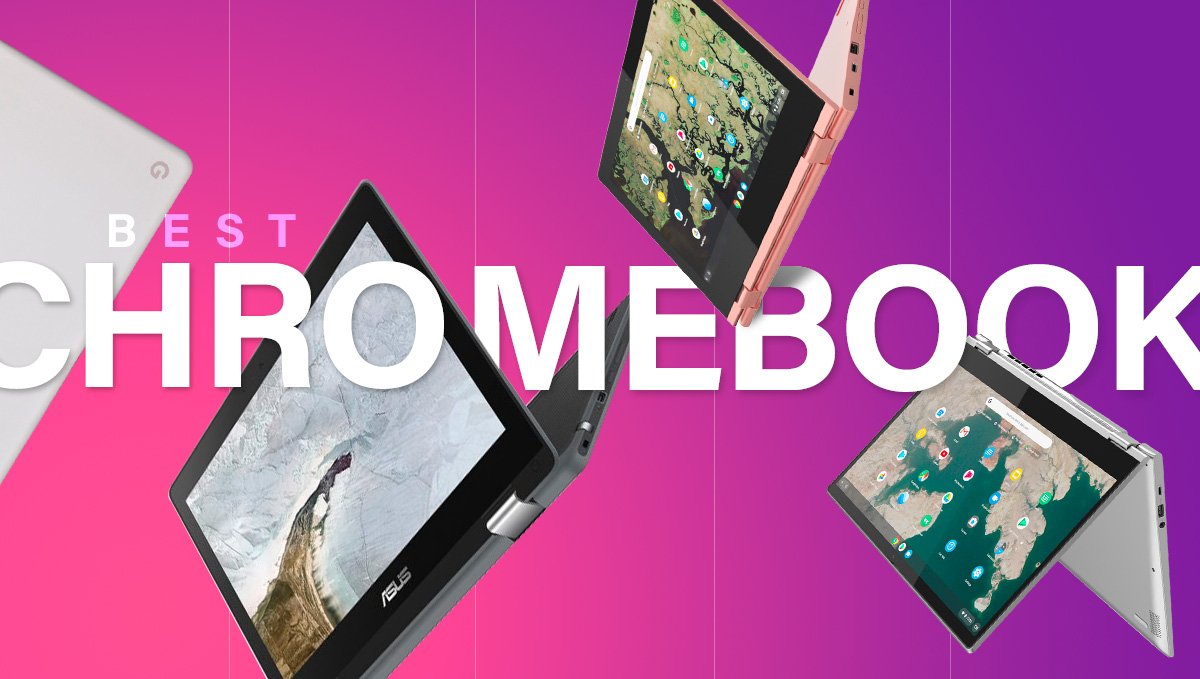
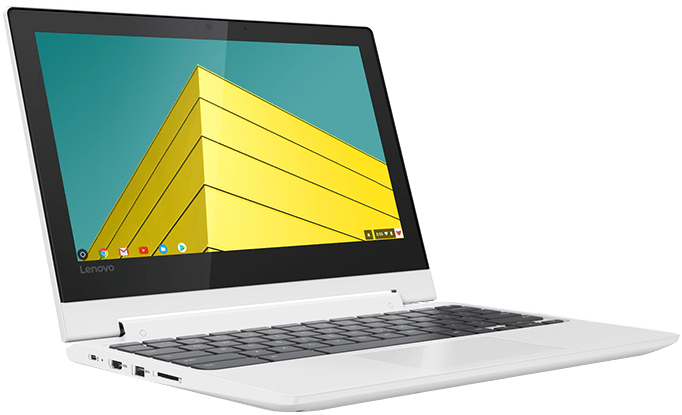
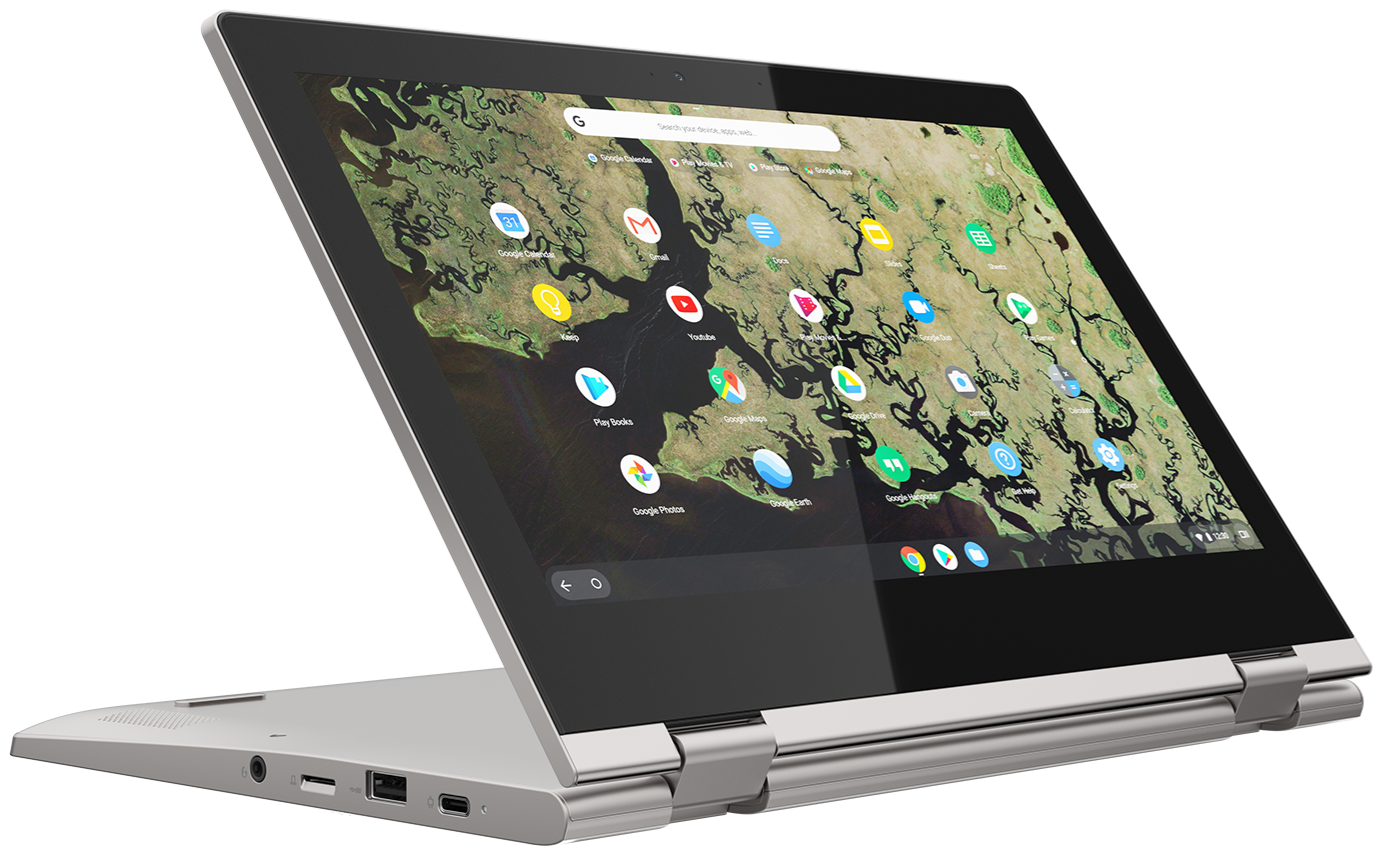

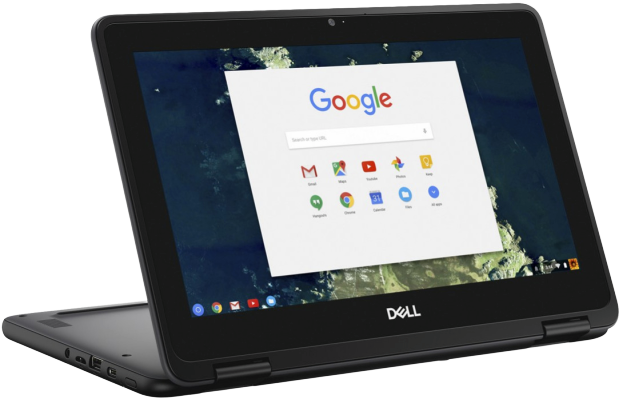
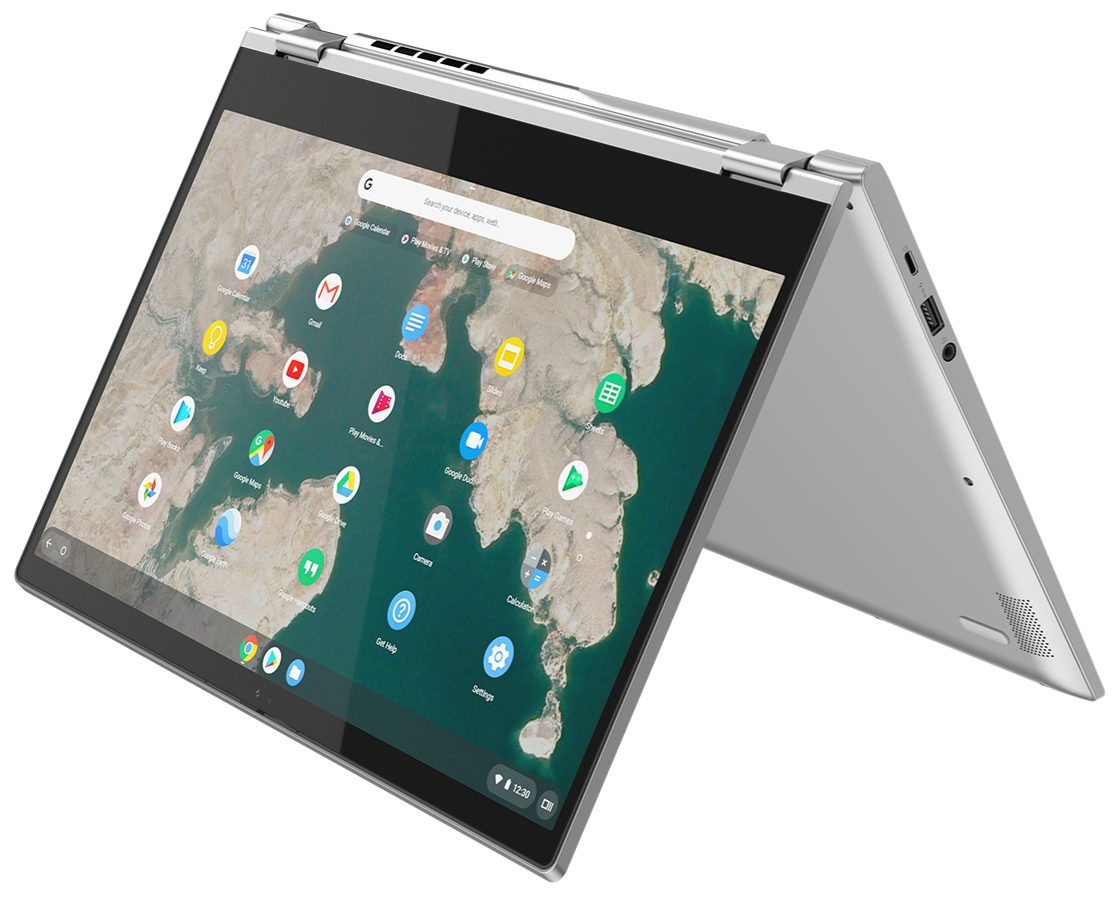
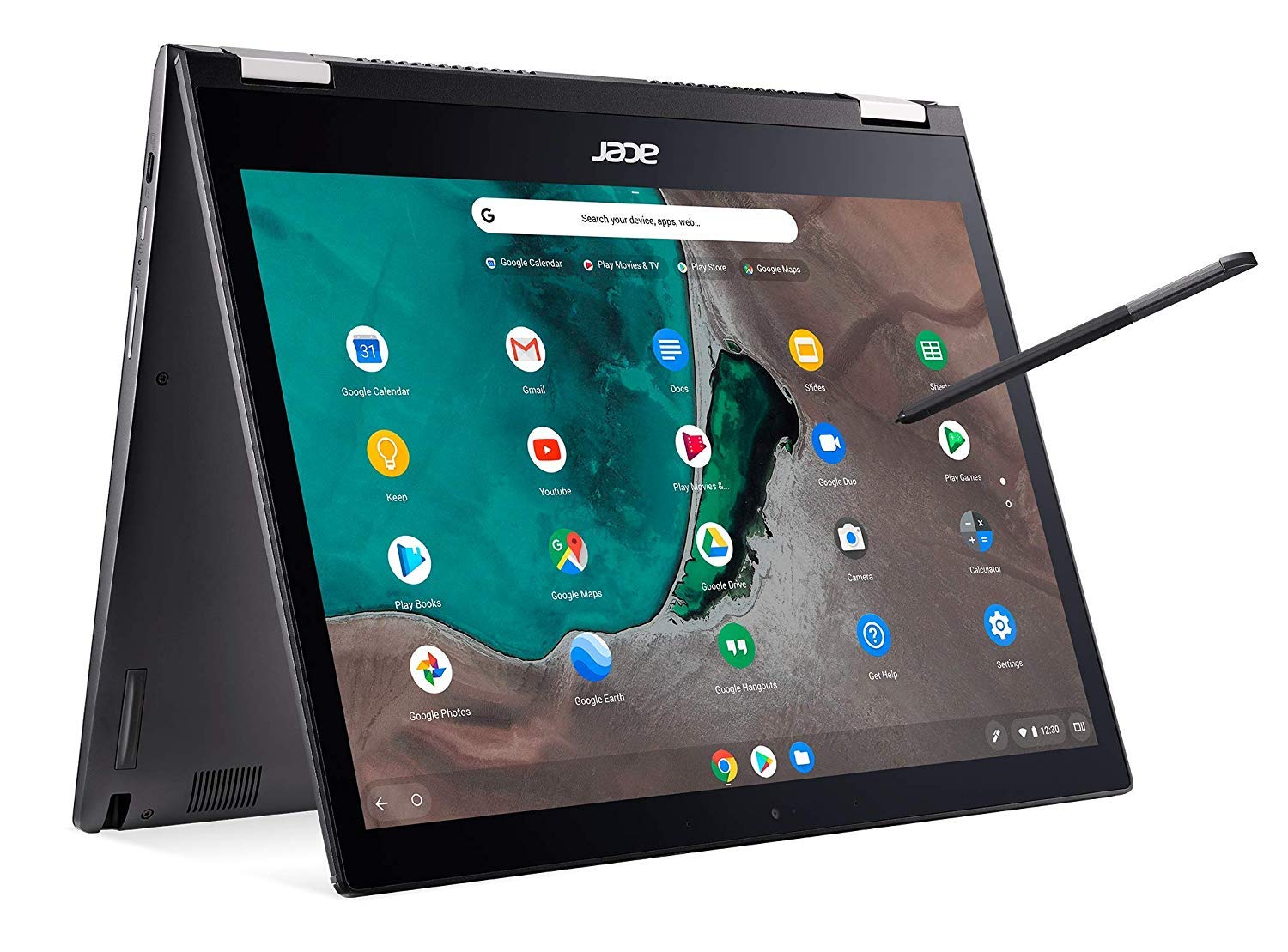
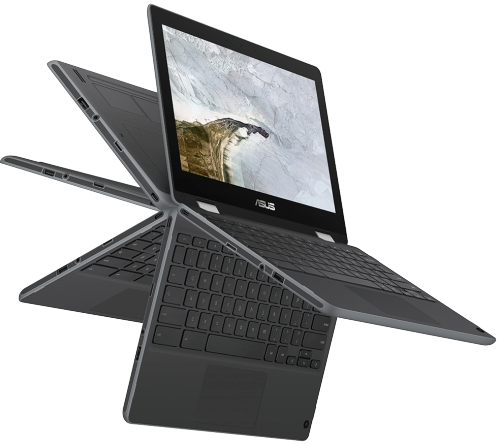
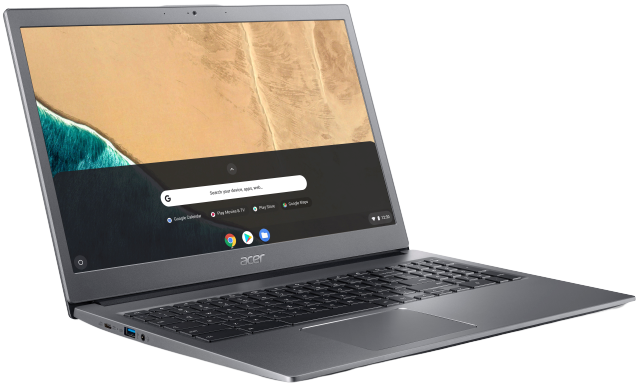
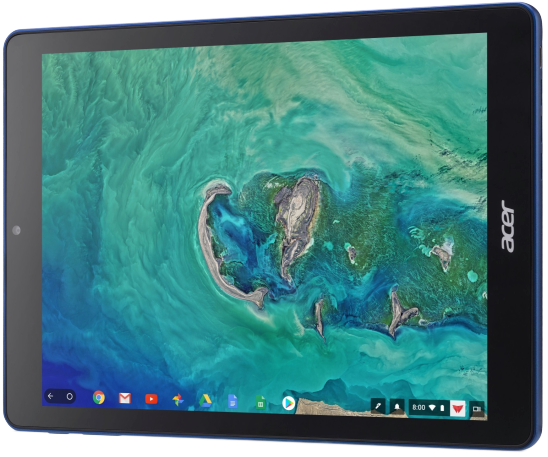
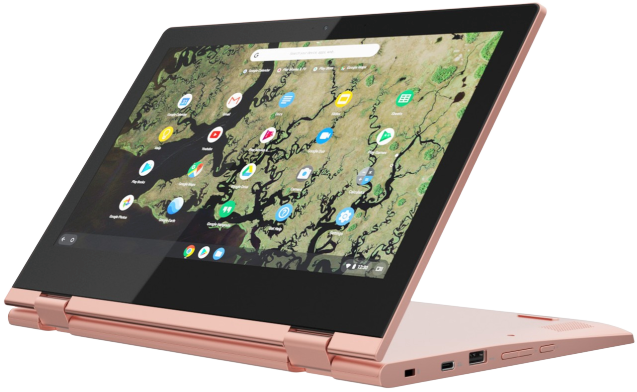



0 comments: